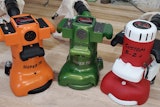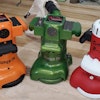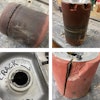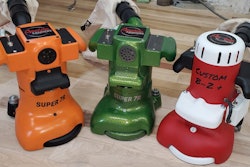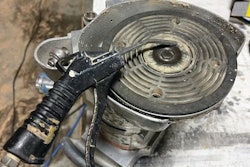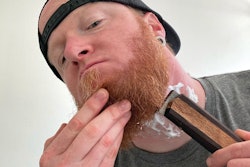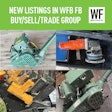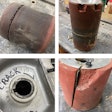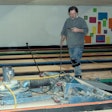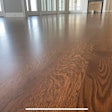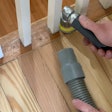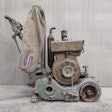Q . I have an edger that's only one year old, and already it isn't sanding very well. I really expected to get better performance out of it. Do you have any suggestions?
A . As an owner of a hardwood flooring business, you have the difficult task of making sure your company runs smoothly and efficiently. An essential part of this is making sure your equipment — from your edgers to your big machines — is properly maintained. It's most likely that your edger has been missing some simple routine maintenance. You may think time in the shop for preventive maintenance costs more time than it's worth, but consider the cost to your productivity if your big machine fails in the middle of a job and the service center is backed up. The cost of downtime far outweighs a regularly scheduled service program. If a machine is down for three days and your crews are usually doing 1,200 to 1,500 square feet at $1.75 (this number will vary depending on your region) during that time, you will have lost more than $2,000. Too often, contractors wait to service their equipment until it is so damaged that the repair cost exceeds the replacement cost. Basic guidelines for preventive service can save you and your crews costly downtime.
First, find a service center that has trained repair technicians and a complete line of service parts. Ask if the service center has a factory-trained technician. Be sure the service center understands the application of your equipment so they can properly test it after the repair. Schedule a set day and time with your service center to keep your work load going smoothly.
One of the best and most cost-effective ways to maintain your equipment is to train someone in your company to perform simple service tasks. Having your equipment repaired in-house will save you downtime and travel time, and will keep your costs down. Most manufacturers offer service training programs.
The question is, how do you know when to perform the needed service and what do you do with each tool or sander. The best information comes from the manufacturers of the equipment, as well as the schedule books. The manufacturers provide very specific guidelines of what to service when. Because there are no hour meters on the units, you need to compare the manufacturers' timelines to your job schedule. You know how many jobs have been completed with the equipment. With that, you can compare the manufacturers' guidelines with your jobs and work out a very cost-effective service program.
There are some simple things that can be done quickly to keep equipment running smoothly. Sanding machinery should have the dust blown out weekly using an air compressor. Floor edgers that are used daily should have their brushes changed twice a year. If you keep extras on hand, it makes it less of a hassle. When changing the brushes, it is a good idea to check the grease and add what is needed.
I have noticed that contractors often overlook dressing the edger pad. Even if the edger does not need to be dressed, you should check to make sure you're getting a smooth cutting free from bounce. When properly set, an edger can be controlled with one hand. On belt machines, the belts should be checked for wear.
Neglecting your drum or belt sander can be very costly. If the machine is leaving chatter or sanding lines, you may spend two extra hours hardplating or buffing. That adds up to about $100 in labor and materials. You can see that spending $100 per day can quickly add up to $500 per week. Take time to check belts weekly, change them when worn, and change bearings once a year. The drum should be visually inspected before you start each job. Check carefully for holes and grooves, and occasionally check the drum for roundness, especially if your sander is leaving chatter marks. Make sure your drum is properly dressed. To dress the drum, put the sanding machine on a piece of nine-ply, architectural-grade plywood with a piece of 100- or 120-gritpaper glued flat to the plywood. Lower the drum carefully, barely making continuous contact without flat spots. Be certain that the paper is secured to the plywood so that it will not break loose, causing damage to the drum. Finally, remember to keep the wheels clean and free from dust.
Maintenance on other equipment is fairly simple. Blow the dust off of buffers regularly. Vacuum filters should be cleaned and replaced when necessary. This helps both the everyday performance and the long-term life of the motor. Saws should be kept clean, and the fence should be squared. Don't forget the importance of checking for nicks and cuts in the power cords of all your equipment. For safety, ground plugs should never be cut off.
As you can see, establishing a routine maintenance schedule for your equipment — both in your shop and at the service center — is hassle-free, and will save you both time and money in the long run.










